I was back at John Brewer Reef last week and many of the corals are now dark brown. John Brewer reef has lost its pink, for the moment.
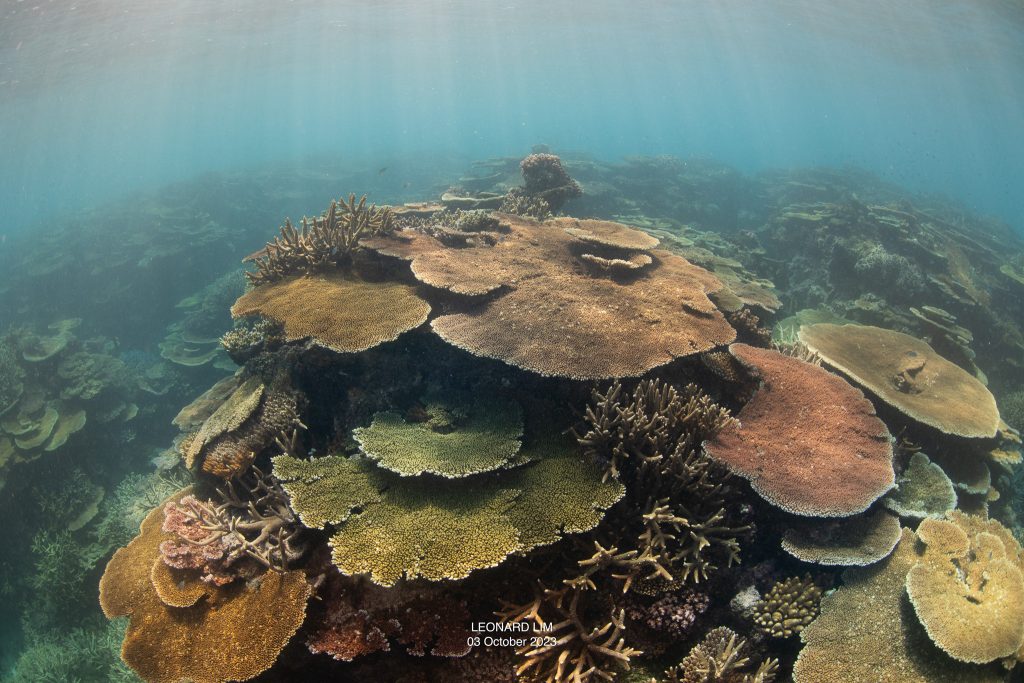
There is a Coral Watch program that was developed at Heron Island by the University of Queensland. The ‘Coral Watch Coral Health Chart’ quantifies the health of a coral according to the intensity of its colour that is considered a proxy for the concentration of zooxanthellae. A report on the status of corals at Heron Island indicates that the corals tend to score between 3 and 4, which is considered healthy.
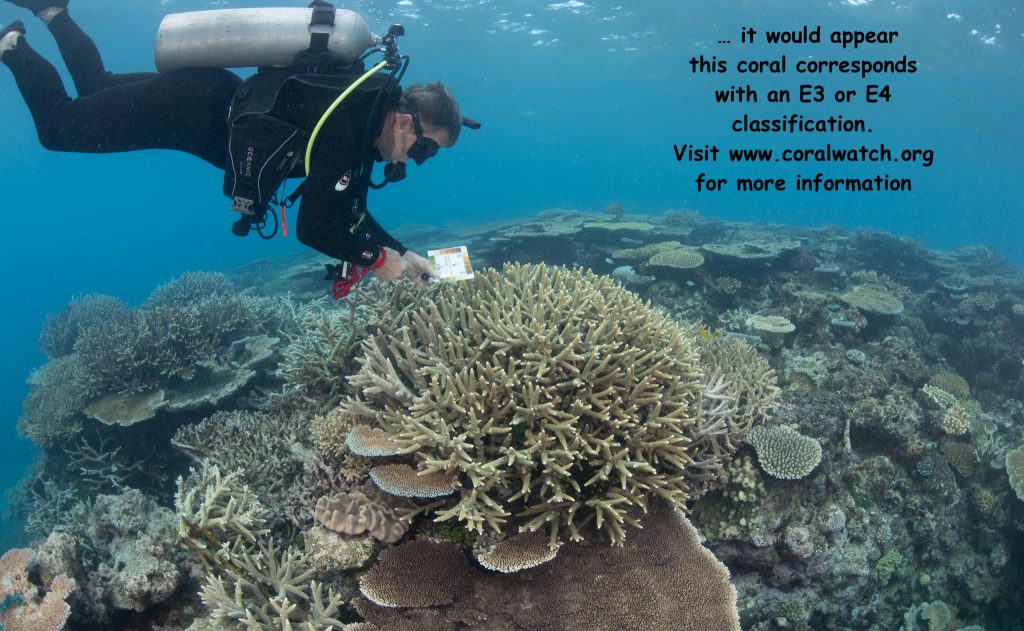
According to The Coral Watch website, to score a reef:
1. Choose a random coral and select the lightest area.
[Don’t include the growing tip that is usually white.]
2. Rotate the chart to find the closest colour match.
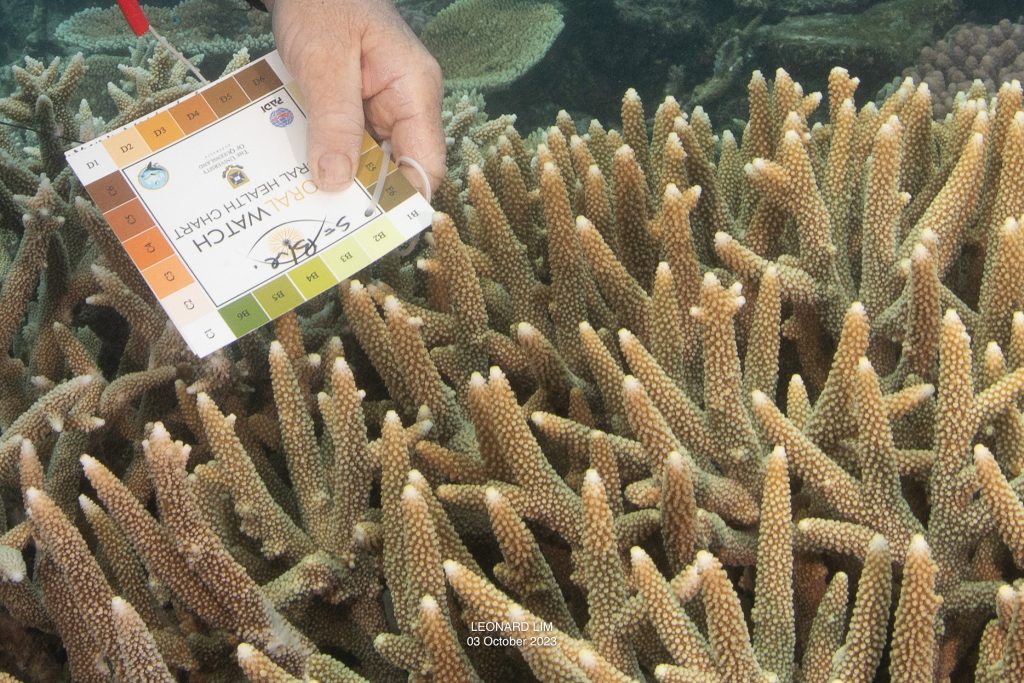
3. Record the colour code on a data slate.
4. Select the darkest area of the coral and record the matching colour code.
5. Record the coral type.
6. Continue your survey with other corals. Record at least 20 corals.
7. Submit your data online at www.coralwatch.org
Ideally this is done with the chart beside the coral at the reef. But, given the extraordinary quality of the underwater photographs taken by Leonard Lim last Tuesday, and that some include the colour chart held by Paul Crocombe, PADI Master Scuba Instructor, a Master Reef Guide and Vessel Master and Owner, I am attempting some interpretation here, so we might be able to quantify how brown the corals were last week for that patch of reef.
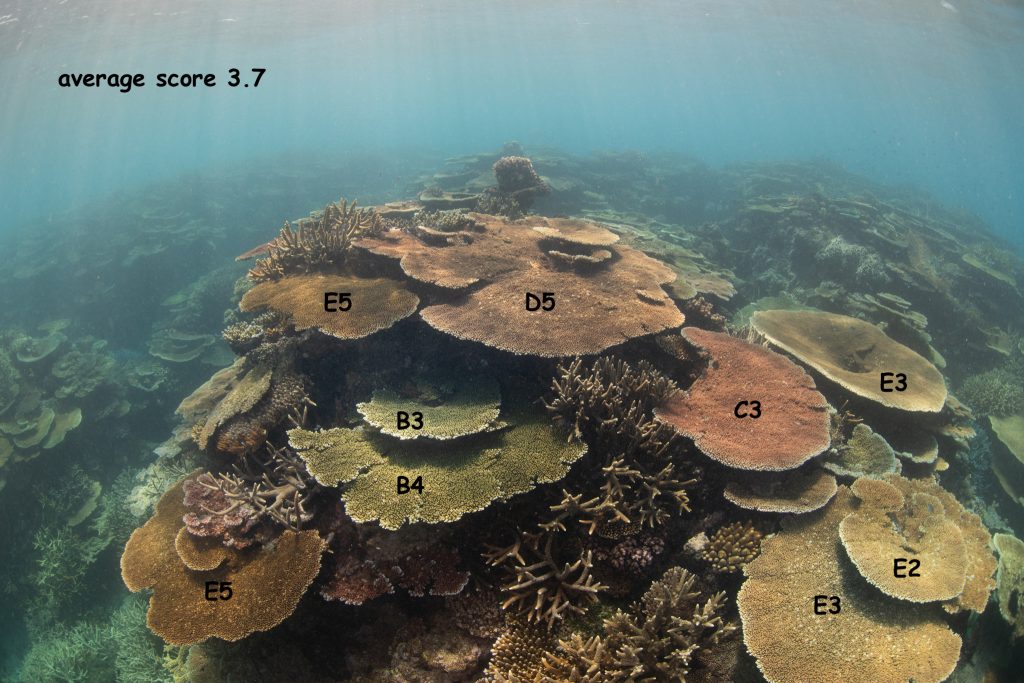
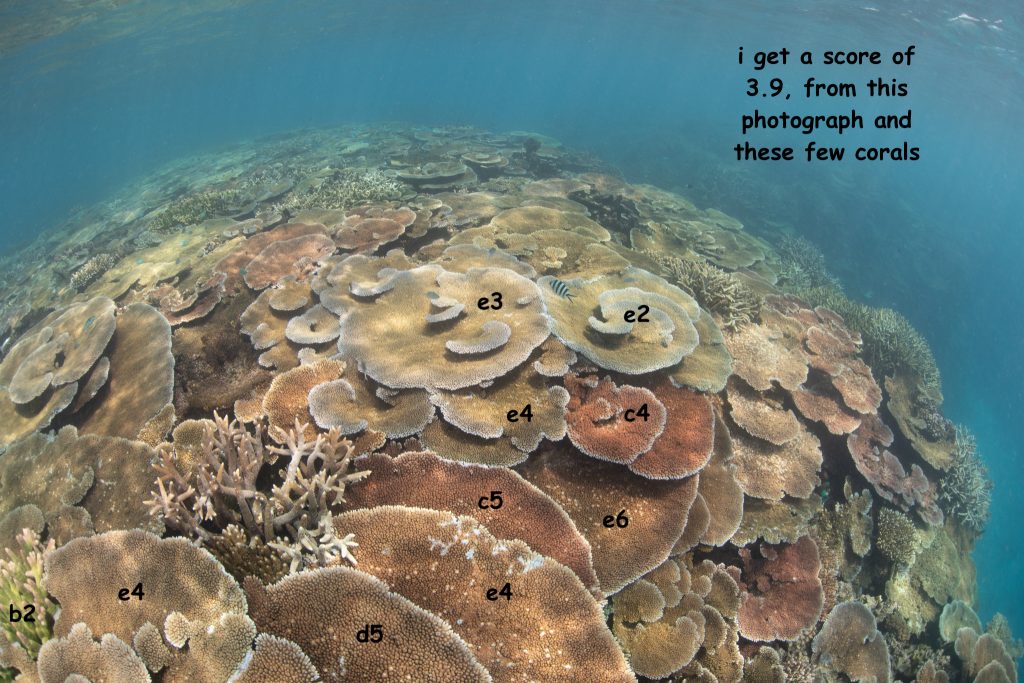

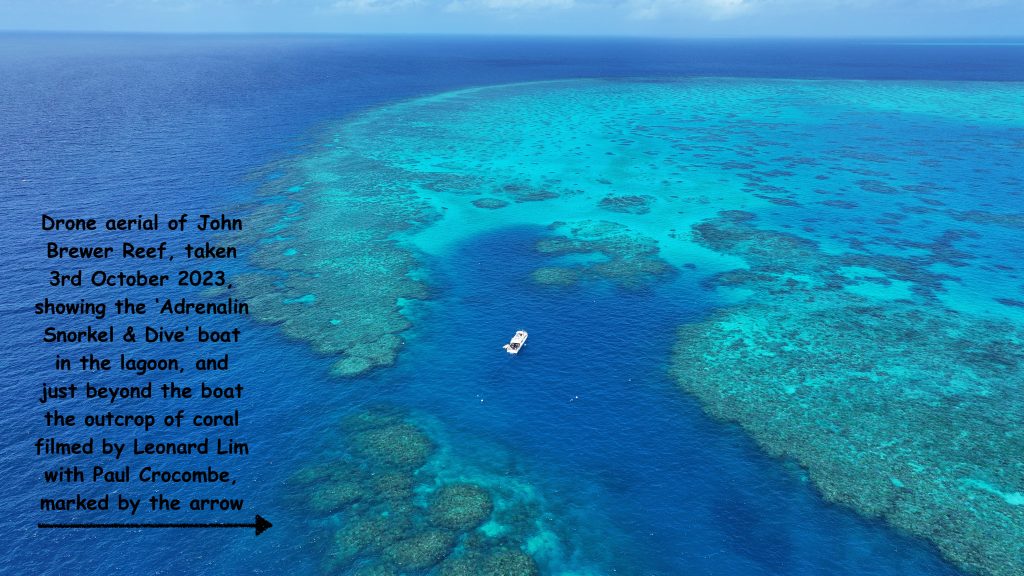
I first visited John Brewer reef on 10th April last year, with photographer Leonard Lim and cinematographer Stuart Ireland, specifically to photograph and film the bleaching. At the time this reef, John Brewer Reef, was reportedly the centre of a sixth mass coral bleaching – and I wanted it all recorded, for that moment in time.
We did find some corals that had bleached white, but mostly I was surprised at how pink the reef was back then. Leonard took some exquisite photographs and Stuart filmed sections of coral that can be viewed in part 1 of a documentary entitled ‘Bleached Colourful’.
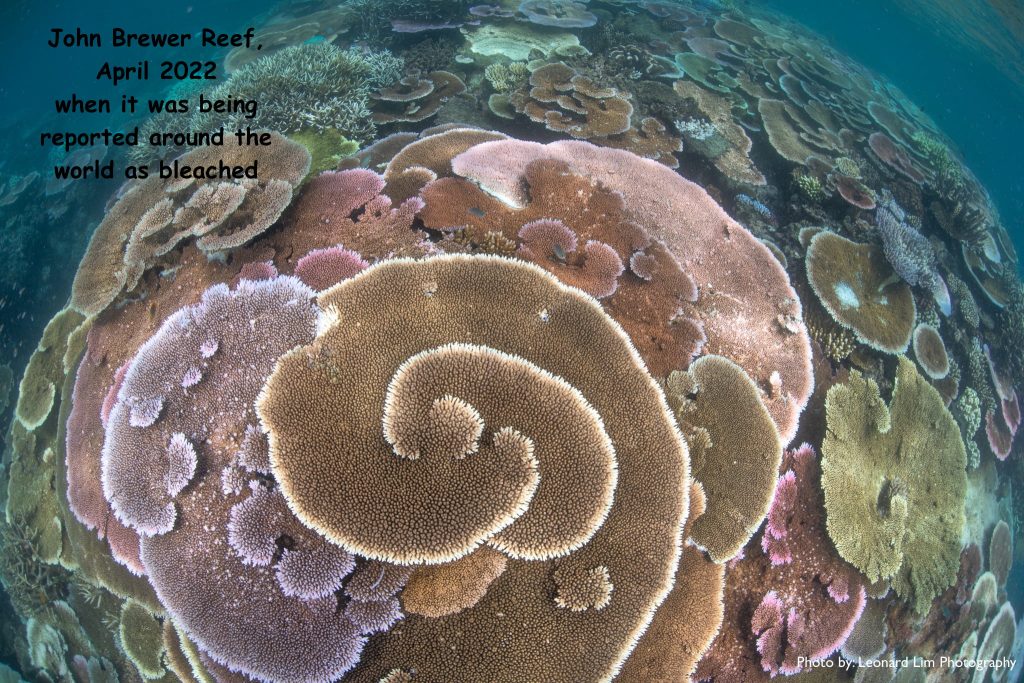
Back in April 2022, many of the corals had ‘kicked out’ their symbiotic algae and so it was possible to see more of their natural pink colour. The pink is from a florescent protein that can ‘upregulated’ when corals are stressed.
It is somewhat counter intuitive that the more symbiotic algae, also known as zooxanthellae, the healthier a coral and the less colourful!
According to the Coral Watch Website:
The Coral Health Charts are based on the actual colours of bleached and healthy corals. Each colour square corresponds to a concentration of symbionts contained in the coral tissue. The concentration of symbionts is directly linked to the health of the coral. All you have to do is match the colour of the coral with one of the colours on the chart. You then record the lightest and darkest colour codes, along with coral type, on a waterproof data slate.
The hues on the chart represent the most common colours of corals, and help our eyes to make an accurate match. The brightness of the colours ranging from 1 to 6 are the same on every side of the chart, so you can mix and match sides.
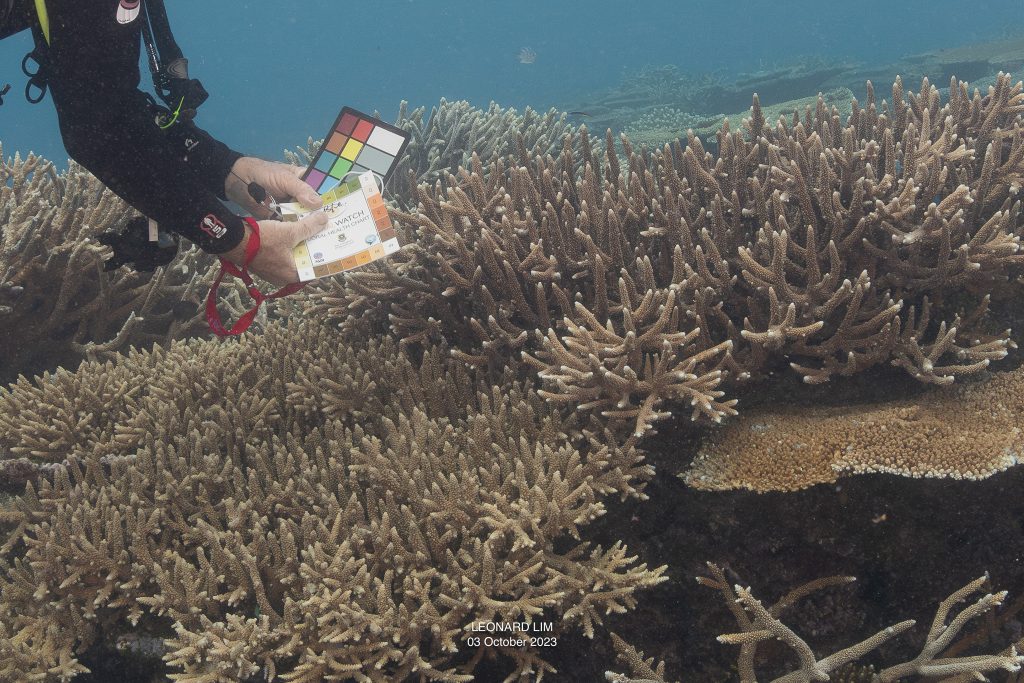
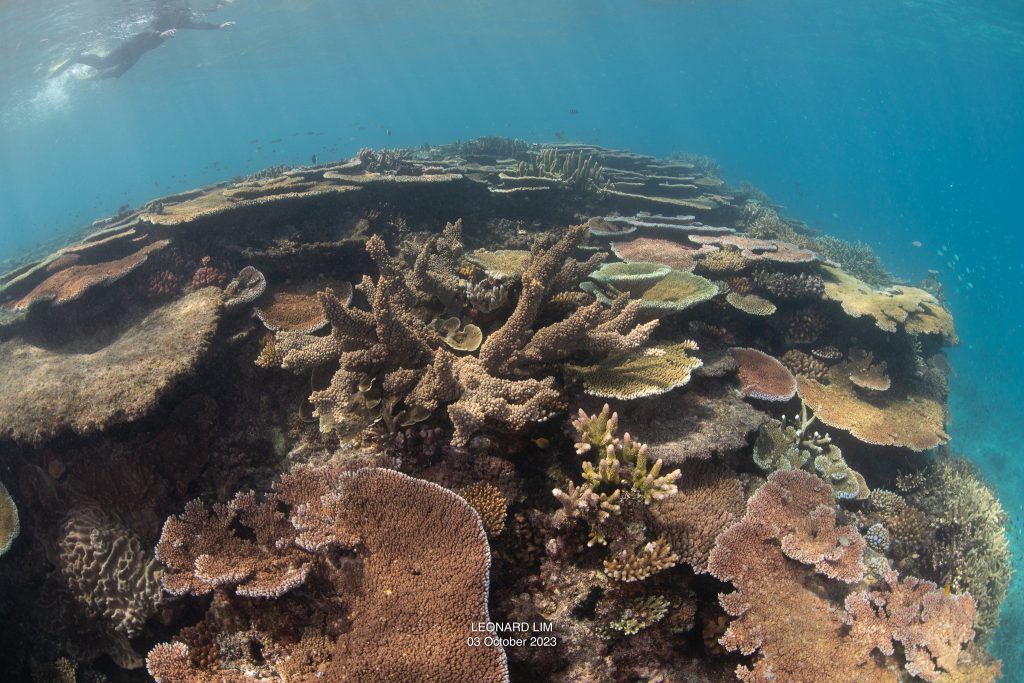
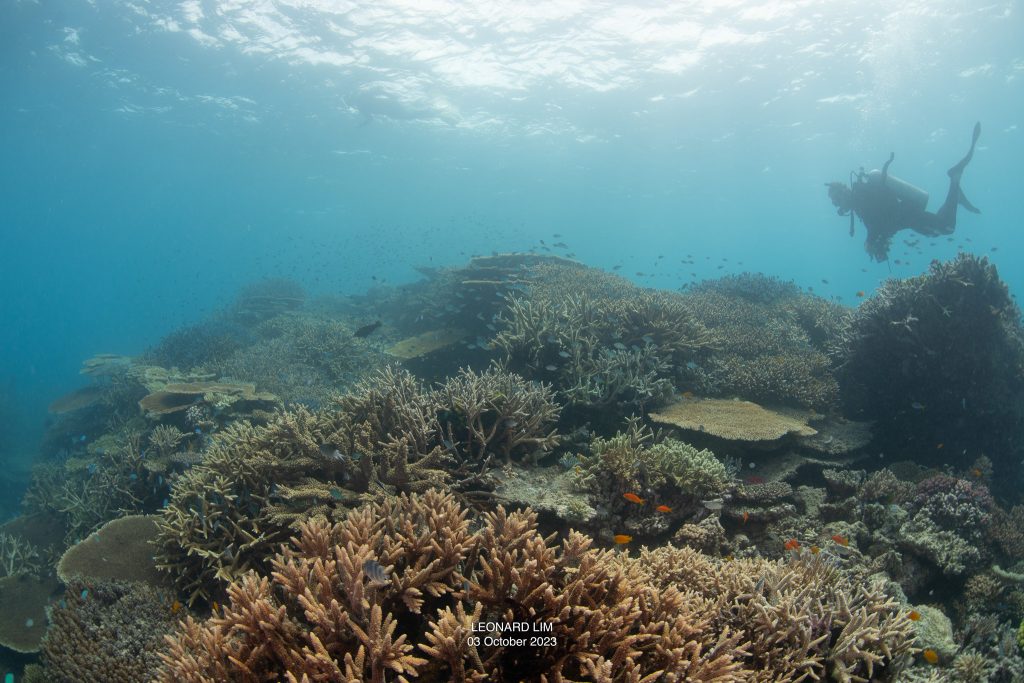

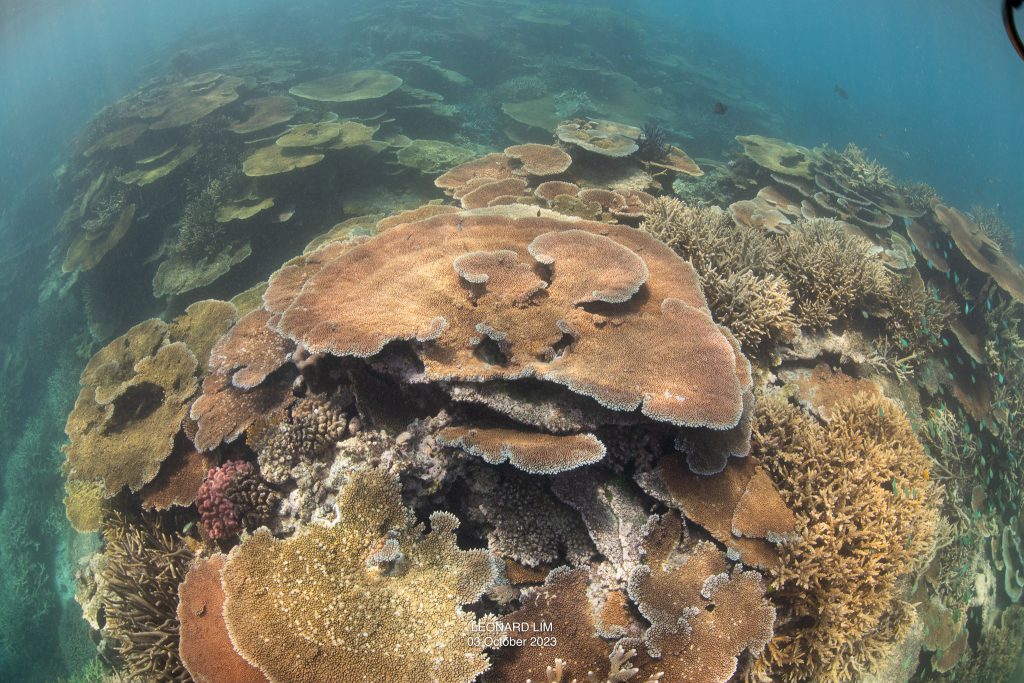
************************
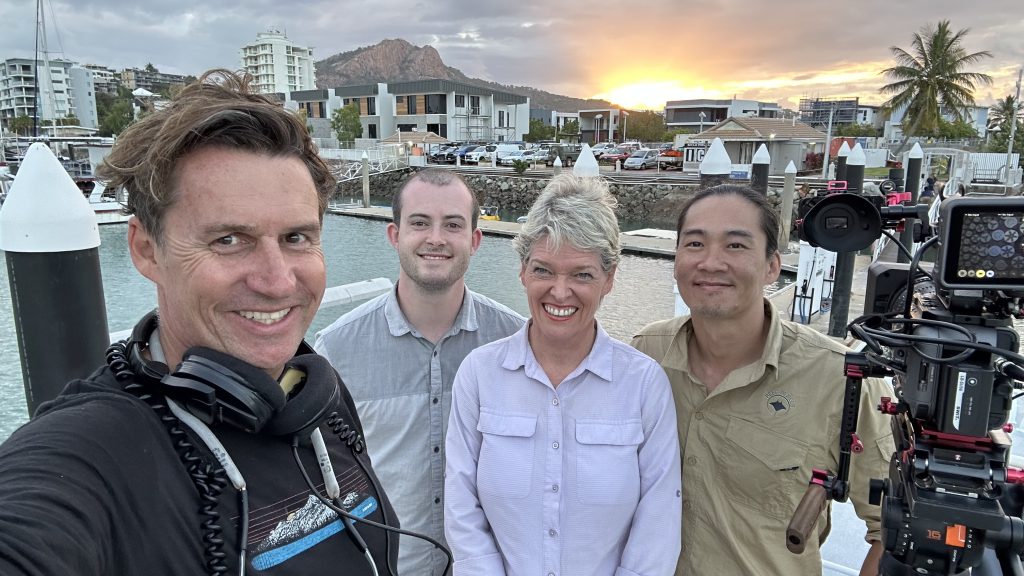
So much thanks to Adrenalin Snorkel and Dive for a great day at the reef.
You can read more about the structure and history of coral reefs in this central region of the Great Barrier Reef at a previous blog post, about Britomart Reef by clicking here.


 Jennifer Marohasy BSc PhD is a critical thinker with expertise in the scientific method.
Jennifer Marohasy BSc PhD is a critical thinker with expertise in the scientific method.

The John Brewer coral reef seems to be in good condition despite the political campaigns.
Thanks once again, Jen, for your great efforts in keeping “them” honest.
It’s also great data for the rest of us.
It’s great to have this information always coming in, and keeping us informed and giving us the argument to counter the unrational side of the green politics
Many thanks,Karl Penna, Mapleton
“One of the most important factors that is driving the decline in corals on many reef systems including the Great Barrier Reef is increasing sea temperatures caused by climate change and this results in mass bleaching events which kills many of the corals that form the foundation of the reef itself.”
Good to know that your colleague Stuart Ireland was involved.
Excellent work and a lot of hard endeavour gone into it. The example set by Jennifer and her team is one that should have been practised by AIMS for decades. Visit a range of reefs on an annual basis, to the same outcrops each time and chart their progress from live to fluorescing, to dead, to rejuvenation etc., taking account of storms and COTS but most importantly using diver visual inspection and description, not manta tows or even worse meaningless aerial surveys. That would have been a worthwhile long-term project but its absence says a lot about the Australian authorities, though as a UK citizen I bear the embarrassment and shame of being home to the Guardian and BBC fighting to see who can outdo Pravda for deception. Nevertheless, we have to try to defend free speech even as it is steadily whittled away by the very same media groups that use that freedom to deceive.
Peter Etherington-Smith…. Energy industry project management, technical and commercial. Lead in authority negotiations and dispute resolution.
Galileo was unpersoned for noticing the moons of Jupiter really do move. Keep on documenting reality, and the utter fraud of consensus based “science”.